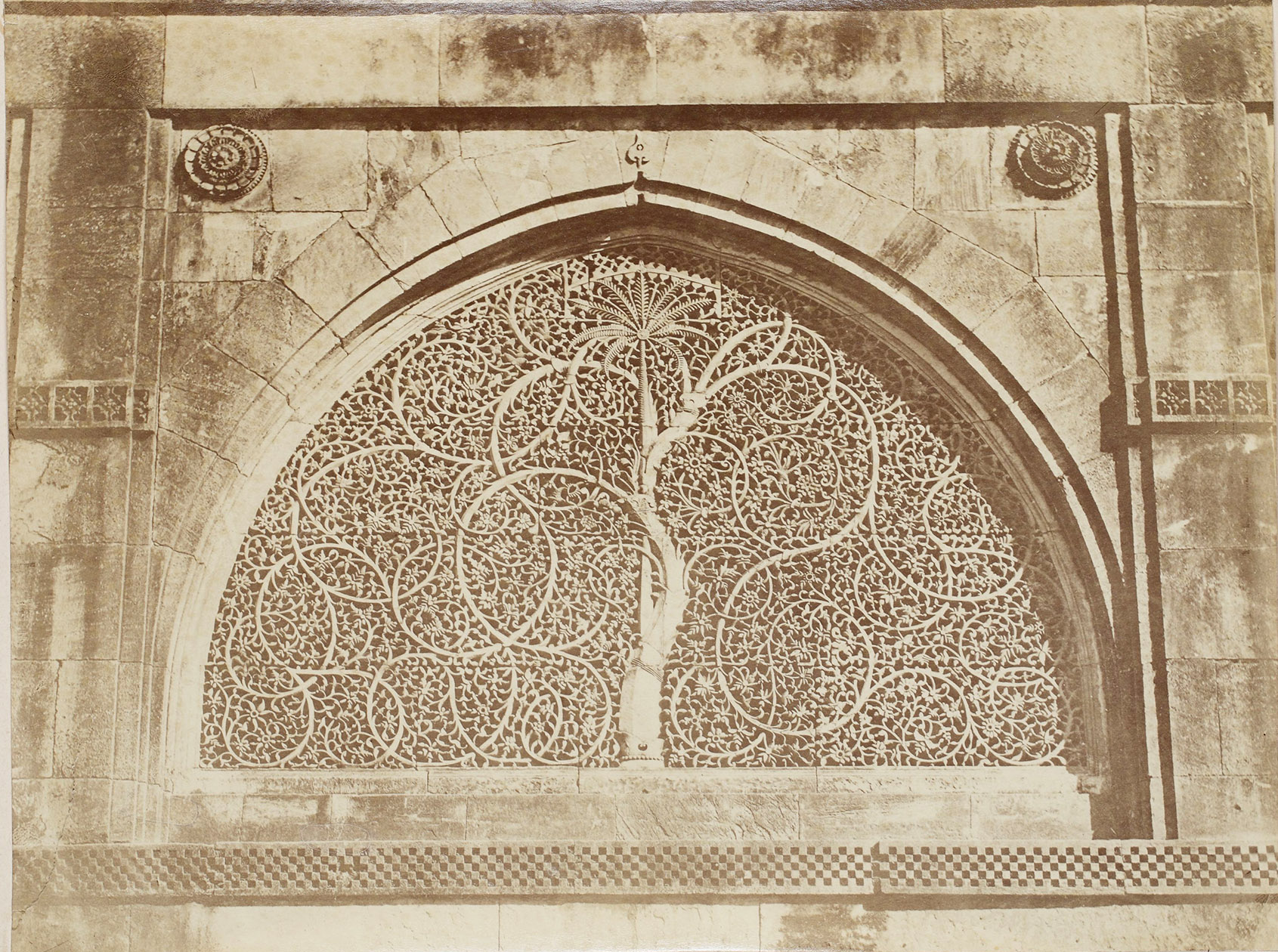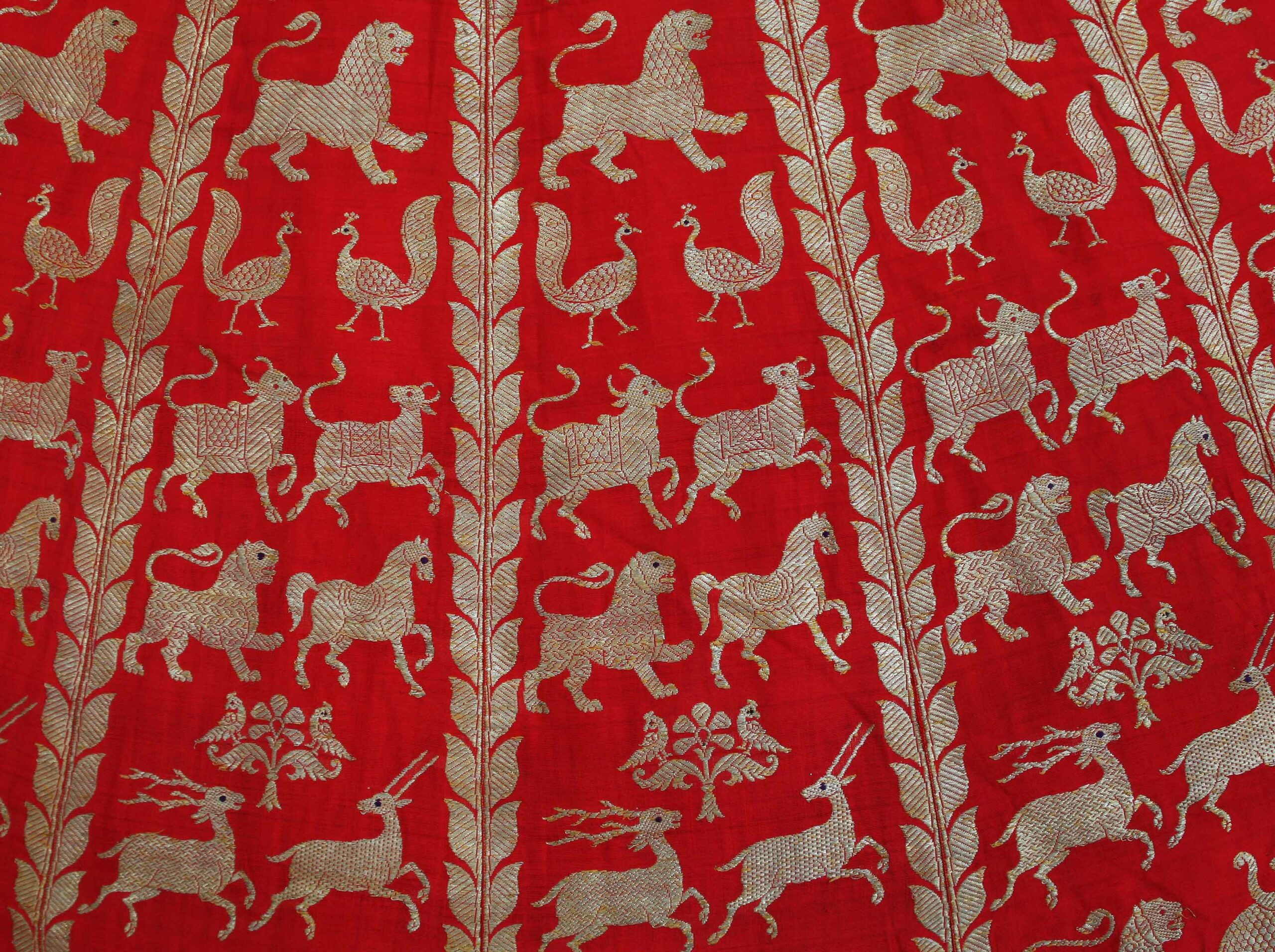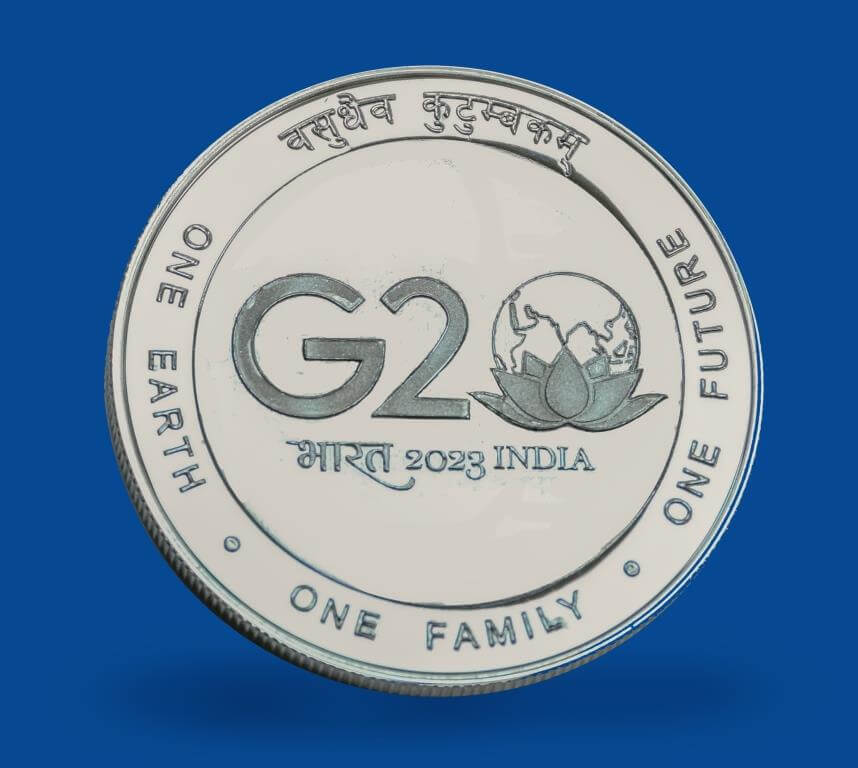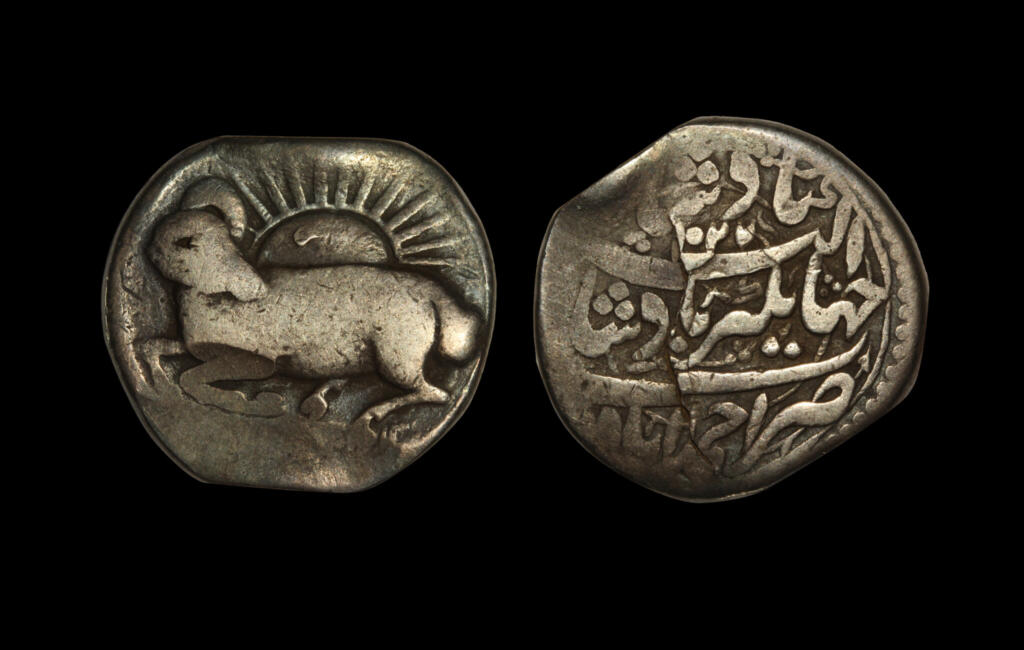
Figure of a ram on an ‘Aries’ coin from Mughal Emperor Jahangir’s zodiac series, silver rupee, AH 1027-1618 CE © Sarmaya Arts Foundation
The relationship between humans and animals has been a reasonably sturdy one, withstanding the vicissitudes of time. It has been immortalised in cave paintings, sculpture, seals and coins. In fact, the earliest surviving painting of an animal goes back 45,500 years in time: a cave painting of pig found in Indonesia.
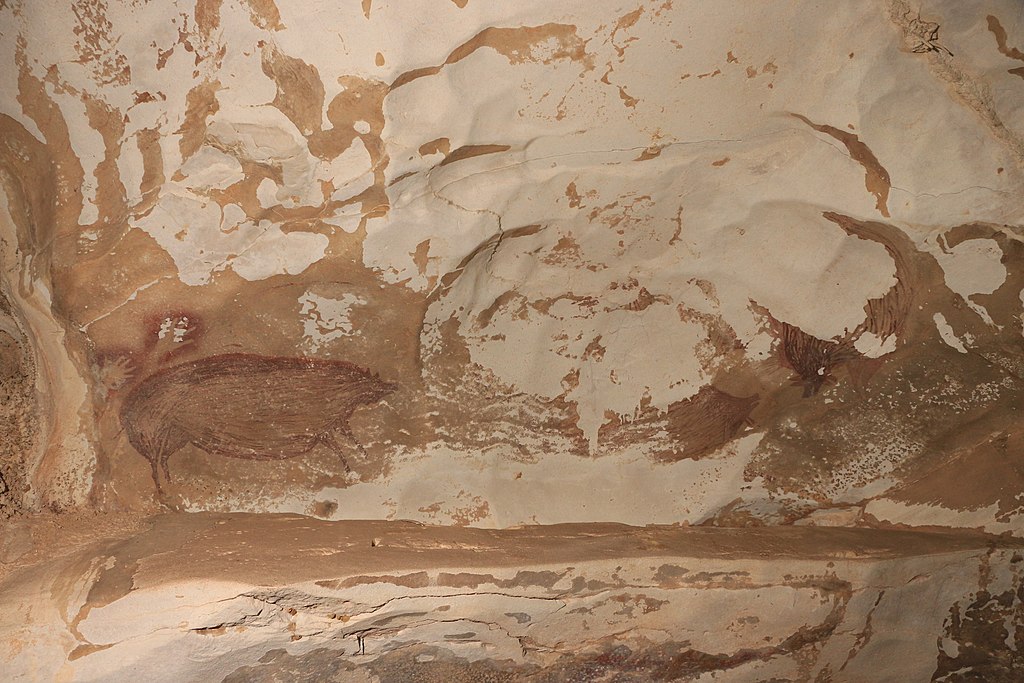
45,500-year-old cave painting of a pig at the Leang Tedongnge cave, Sulawesi, Indonesia, photo by Basran Burhan, CC BY-SA 4.0 via Wikimedia Commons
On the Indian subcontinent, seals from Indus Valley, one of the earliest urban civilizations in the world, showcase animals including the rhinoceros, elephant, buffalo, tiger, goat, zebu and the ‘unicorn bull’. The earliest coins found on the Indian subcontinent date to the 5th century BCE. These punch-marked coins are named for the technique used in minting them.
The earliest depiction of an animal on a punch-marked coin is that of the bull on a hilltop, a symbol known as Indradhwaja, flanked by taurine (bull with horns) and elephants. Some experts believe these symbols represent the Nanda dynasty of Magadha. During the medieval period, as Islamic rulers start to issue currency in the Indian subcontinent, these motifs become scarce as the faith prohibited the depiction of human or animal forms. Interestingly, however, some early Turkish coins have the likeness of Goddess Lakshmi on them. Another, later exception to this rule was Mughal Emperor Jahangir, who issued gold coins featuring his profile and the figure of a lion on the reverse. He also famously commissioned the zodiac series, which numismatists consider exquisite in style.
Let’s look into the legends of three animals frequently found on old Indian coins.
Elephant, a symbol of royalty
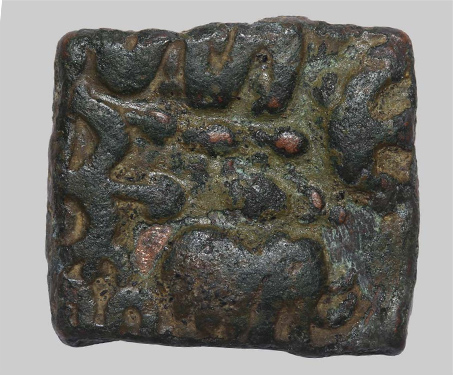
Figure of elephant on an un-inscribed copper coin from the Chera dynasty, 100 BCE to 250 CE © Sarmaya Arts Foundation
Some of the oldest representations of the elephant are found on the punch-marked silver coins of the Maurya empire. There’s some debate among scholars as to what it symbolises. After the Kalinga War (261 BCE), rulers of the Mauryan empire converted to Buddhism, starting with Emperor Ashoka. Legend has it that Gautama Buddha’s mother Queen Maha Maya of the Shakya clan envisioned a white elephant entering her womb before she conceived him. The pachyderm has since been significant to the Buddhist faith. Carvings of elephants in lotus-filled ponds surrounding the figure of Goddess Gajalakshmi are found at Buddhist sites in Bharhut and Sanchi.
Old Sanskrit scientific treatises like the Matanga Lila show that the domestication of elephants was a regal prerogative. From Matanga Lila, we learn that elephants were created at the beginning of time when Lord Vishnu’s mount Garuda came into being. When the celestial bird hatched from its egg, Lord Brahma, the creator, took the shells and sang seven holy melodies. From these incantations was born the elephant Airavat, the vahana of Lord Indra.
Bull, the vehicle of Lord Shiva
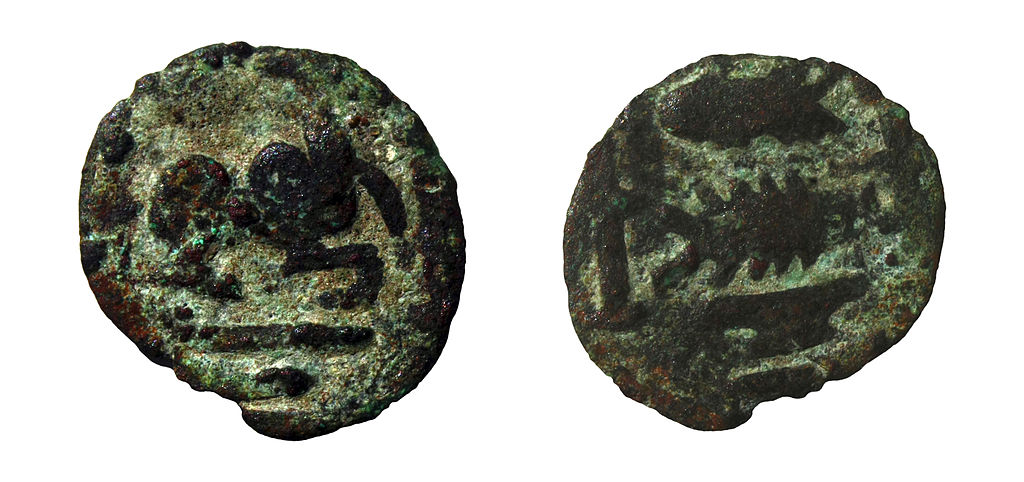
A Pandyan Nandi Bull coin, fishes on the reverse (found in Sri Lanka), image by AntanO, CC BY-SA 4.0, via Wikimedia Commons
The Pandyan kings of Korkai in present-day Tamil Nadu frequently issued coins featuring a bull—not as a representation of the species, but as a stand-in for its divine rider. Nandi, the bull is Lord Shiva’s vahana and its appearance on coins reinforced the devotion of the rulers as ardent Shaivites.
Boar, an avatar of Lord Vishnu
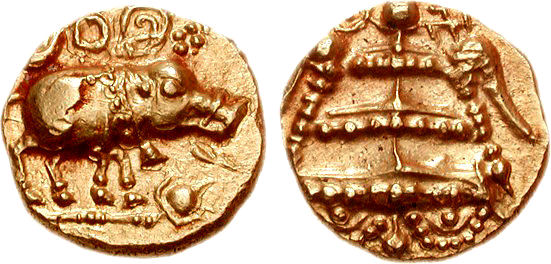
Wild boar on a coin by the Chalukyas of Kalyana, image by Classical Numismatic Group, Inc. http://www.cngcoins.com, CC BY-SA 3.0, via Wikimedia Commons
In the Chalukya capital of Aihole in present-day Karnataka, you will spot plentiful representations of Lord Vishnu in his Varaha-roopam as wild boar. According to the puranas, an asura called Hiranyaksha kidnapped Goddess Bhudevi or Mother Earth and hid her in the primordial cosmic ocean. To save the planet, Lord Vishnu assumed the Varaha avatar, dove into the ocean and emerged with the earth on his tusks.
Bibliography
Archaic Coinage of the Godavari Valley and The Deccan, 2022, Prashant P Kulkarni
The Penguin History of Ancient India: From the Origin to AD 1300, 2003, Romila Thapar
Myths and Symbols in Indian Art and Civilization, 2017, Heinrich Robert Zimmer, edited by Joseph Campbell

